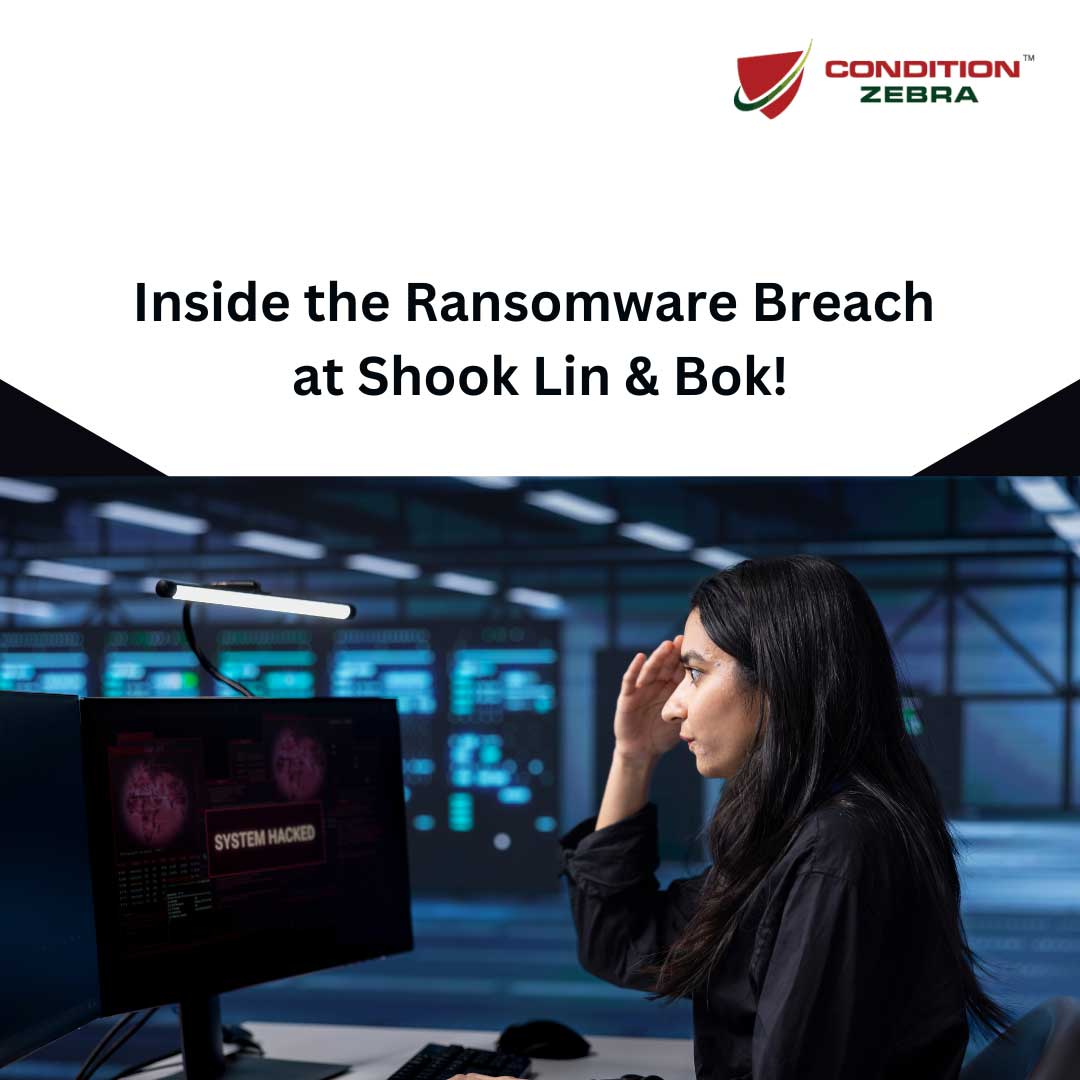In April 2024, a stark reminder emerged that no sector is immune to ransomware, not even the legal industry. Prestigious Singapore law firm Shook Lin & Bok paid a reported US$1.4 million in Bitcoin to cybercriminals after being targeted by the ransomware gang Akira.
While the firm acted quickly and decisively, the implications go far beyond a single payout. This event reveals uncomfortable truths about cyber readiness in traditionally conservative industries—and provides crucial lessons for organisations in Singapore and beyond.
At Condition Zebra, we’ve helped clients across law, finance, healthcare, and government respond to, recover from, and prevent ransomware attacks. This latest incident is more than news—it’s a case study in what can go wrong and what must be done right.
Incident Overview: How the Attack Unfolded
According to media reports, Shook Lin & Bok detected the ransomware breach on April 9. The firm’s response team moved swiftly, bringing in external cybersecurity professionals and lodging a police report.
But behind the scenes, negotiations with the attacker—a group operating under the Akira Ransomware-as-a-Service (RaaS) banner—were already in motion.
The attackers allegedly demanded US$2 million, which was negotiated down to US$1.4 million in Bitcoin. Details of the negotiation were later leaked by cybersecurity blog SuspectFile, showing how attackers use both technical control and psychological pressure to force compliance.
What Makes Law Firms Attractive Targets?
This isn’t the first time cybercriminals have targeted legal institutions—and it won’t be the last.
Law firms are data-rich environments, often with:
- Client-sensitive information
- Ongoing regulatory filings
- Intellectual property
- Merger & acquisition documents
- Financial and compliance data
Unlike banks or telcos, law firms often lag in cybersecurity maturity. Many rely on legacy infrastructure and outdated access policies, making them low-hanging fruit for attackers using modern exploitation techniques.
CSA’s Warning—and Why Firms Keep Paying
Singapore’s Cyber Security Agency (CSA) has been clear: Do not pay ransoms.
“There is no guarantee that paying will lead to data recovery,” CSA has warned. “And doing so encourages more attacks.”
But statistics tell another story. In a 2023 CSA-backed survey:
- 60% of firms in Singapore admitted to paying ransoms
- 36% paid over US$500,000
The hard truth is that many organisations, when cornered, will choose the least damaging route. If client data is at stake—or if operations have halted completely—the business decision may favour ransom payment, despite the long-term risks.
Who is Akira—and How Do They Operate?
Akira is a rapidly growing RaaS group active since early 2023. It partners with affiliates worldwide to compromise networks and demand ransom.
Their typical tactics include:
- Brute-force attacks on VPNs and RDP ports
- Unpatched vulnerabilities in perimeter systems
- Social engineering (especially phishing) for initial access
- Double extortion (encrypting systems and threatening to leak data)
Once they infiltrate a system, the attackers exfiltrate sensitive files before encryption—giving them leverage even if backups exist.
Response Is Good. Readiness Is Better.
From Condition Zebra’s own engagements across Southeast Asia, we’ve seen that preparedness determines whether a ransomware event is a breach—or a breakdown.
Shook Lin & Bok’s rapid containment is commendable. But for many firms, the ability to:
- detect intrusion early,
- isolate infected endpoints,
- prevent lateral movement, and
- recover operations without negotiation
is what separates recovery from collapse.
Lessons for Your Organisation: 7 Actionable Steps
This attack wasn’t unique—it was a preview of what could happen in your organisation tomorrow. Here’s what you can do now to improve your security posture:
1. Assess Your Risk Exposure
- Identify critical systems, data assets, and user access levels.
- Conduct regular penetration testing and vulnerability assessments.
2. Update and Enforce Access Controls
- Implement Multi-Factor Authentication (MFA) across all remote access points.
- Apply least-privilege access policies, especially for admin accounts.
3. Strengthen Email and Endpoint Defenses
- Phishing remains the #1 attack vector. Train your people.
- Deploy Endpoint Detection & Response (EDR) tools that detect behavior anomalies.
4. Segment Your Network
- Don’t allow attackers to move freely within your infrastructure.
- Use VLANs and firewall policies to contain threats.
5. Prepare for the Worst
- Build and test a Ransomware Incident Response Plan.
- Include both technical recovery and internal/external communication steps.
6. Back Up—And Test It
- Backups must be automated, encrypted, offline, and regularly tested.
- Without restore capabilities, backups are just files.
7. Monitor and Hunt Proactively
- Use Security Operations Centers (SOCs) or managed detection to monitor activity 24/7.
- Cyberattacks often linger undetected for weeks. Early detection is everything.
Final Thoughts: Don’t Be the Next Case Study
What happened to Shook Lin & Bok could happen to any law firm. Or bank. Or hospital. Or school.
Building robust cyber resilience through proactive security isn’t just about avoiding breaches—it’s about ensuring business continuity, safeguarding customer trust, and positioning yourself as a leader in the industry.
At Condition Zebra, we believe in prevention first, response readiness always. If you don’t know your weakest link, now is the time to find it—before someone else does.
Condition Zebra provide professional cybersecurity solutions and training—trusted by organizations across industries like banking, government, healthcare, retail, education and others to help prevent and respond to modern cyber threats.

